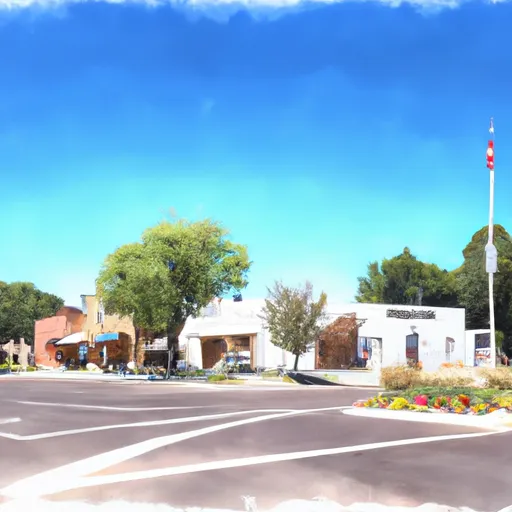-
 Snoflo Premium
Snoflo Premium
Get unlimited access to all our content
With no Ad interruptions! - Start Your Free Trial Login with existing account
Milford
Eden Index
Climate
7.0
•
Recreation
3.4
•
Community
•
Safeguard
4.0/10

Milford, California is a small town located in Lassen County, nestled in the picturesque Sierra Nevada Mountains. The climate in Milford is classified as a Mediterranean climate, characterized by hot, dry summers and cold, wet winters. Summers are typically sunny and warm, with temperatures ranging from the mid-80s to the low 100s Fahrenheit. Winters are cooler, with temperatures dropping to the mid-30s and occasional snowfall.
Milford benefits from a rich hydrology system, with several water bodies contributing to its beauty. The nearby Honey Lake is a prominent feature, offering opportunities for boating, fishing, and birdwatching. The Susan River flows through the town, providing additional recreational activities such as kayaking and swimming. Several hot springs can be found in the area, allowing visitors to relax and soak in the therapeutic waters.
Outdoor enthusiasts will find a plethora of recreation opportunities in Milford. The surrounding mountains offer great hiking and camping spots, with picturesque landscapes and breathtaking views. Hunting is also popular in the area, with designated areas for deer, waterfowl, and upland game hunting. Milford also boasts an extensive trail system, perfect for mountain biking and horseback riding.
In summary, Milford, California offers a Mediterranean climate, featuring hot summers and cold winters. Its hydrology constituents include Honey Lake, the Susan River, and hot springs. The town provides a range of outdoor recreation opportunities, including boating, fishing, birdwatching, hiking, camping, hunting, and mountain biking.
What is the Eden Index?
The Snoflo Eden Index serves as a comprehensive rating system for regions, evaluating their desirability through a holistic assessment of climate health, outdoor recreation opportunities, and natural disaster risk, acknowledging the profound impact of these factors on livability and well-being.
Climate Health Indicator (CHI): 7.0
Milford receives approximately
329mm of rain per year,
with humidity levels near 84%
and air temperatures averaging around
10°C.
Milford has a plant hardyness factor of
7, meaning
plants and agriculture in this region tend to thrive during the non-winter months.
By considering the ideal temperature range, reliable water supplies, clean air, and stable seasonal rain or snowpacks, the Climate Health Indicator (CHI) underscores the significance of a healthy climate as the foundation for quality living.
A healthy climate is paramount for ensuring a high quality of life and livability in a region, fostering both physical well-being and environmental harmony. This can be characterized by ideal temperatures, reliable access to water supplies, clean air, and consistent seasonal rain or snowpacks.
Weather Forecast
Streamflow Conditions
North Lahontan
Area Rivers
North Lahontan
Snowpack Depths
North Lahontan
Reservoir Storage Capacity
North Lahontan
Groundwater Levels
Recreational Opportunity Index (ROI): 3.4
The Recreational Opportunity Index (ROI) recognizes the value of outdoor recreational options, such as parks, hiking trails, camping sites, and fishing spots, while acknowledging that climate plays a pivotal role in ensuring the comfort and consistency of these experiences.
Access to outdoor recreational opportunities, encompassing activities such as parks, hiking, camping, and fishing, is crucial for overall well-being, and the climate plays a pivotal role in enabling and enhancing these experiences, ensuring that individuals can engage in nature-based activities comfortably and consistently.
Camping Areas
| Campground | Campsites | Reservations | Toilets | Showers | Elevation |
|---|---|---|---|---|---|
| Big Cove | 42 | 5,616 ft | |||
| Frenchman | 38 | 5,686 ft | |||
| Chilcoot . | 40 | 5,120 ft | |||
| Conklin Park Family . | 9 | 5,935 ft | |||
| Meadow View | 6 | 6,075 ft | |||
| Laufman Family . | 6 | 5,073 ft | |||
| Crocker . | 10 | 5,753 ft | |||
| Lightning Tree . | 40 | 5,832 ft | |||
| Grasshopper Flat . | 70 | 5,795 ft | |||
| Long Point | 38 | 5,043 ft |
Nearby Fishing
Nearby Ski Areas
Catastrophe Safeguard Index (CSI):
The Catastrophe Safeguard Index (CSI) recognizes that natural disaster risk, encompassing floods, fires, hurricanes, and tornadoes, can drastically affect safety and the overall appeal of an area.
The level of natural disaster risk in a region significantly affects safety and the overall livability, with climate change amplifying these risks by potentially increasing the frequency and intensity of events like floods, fires, hurricanes, and tornadoes, thereby posing substantial challenges to community resilience and well-being.
Community Resilience Indicator (CRI):
The Community Resilience Indicator (CRI) recognizes that education, healthcare, and socioeconomics are crucial to the well-being of a region. The CRI acknowledges the profound impact of these elements on residents' overall quality of life. By evaluating educational resources, healthcare accessibility, and economic inclusivity, the index captures the essential aspects that contribute to a thriving community, fostering resident satisfaction, equity, and social cohesion.

